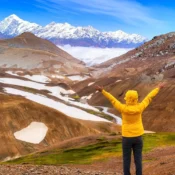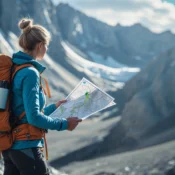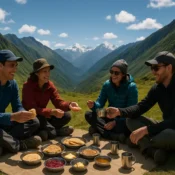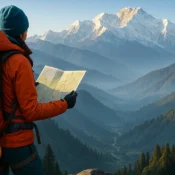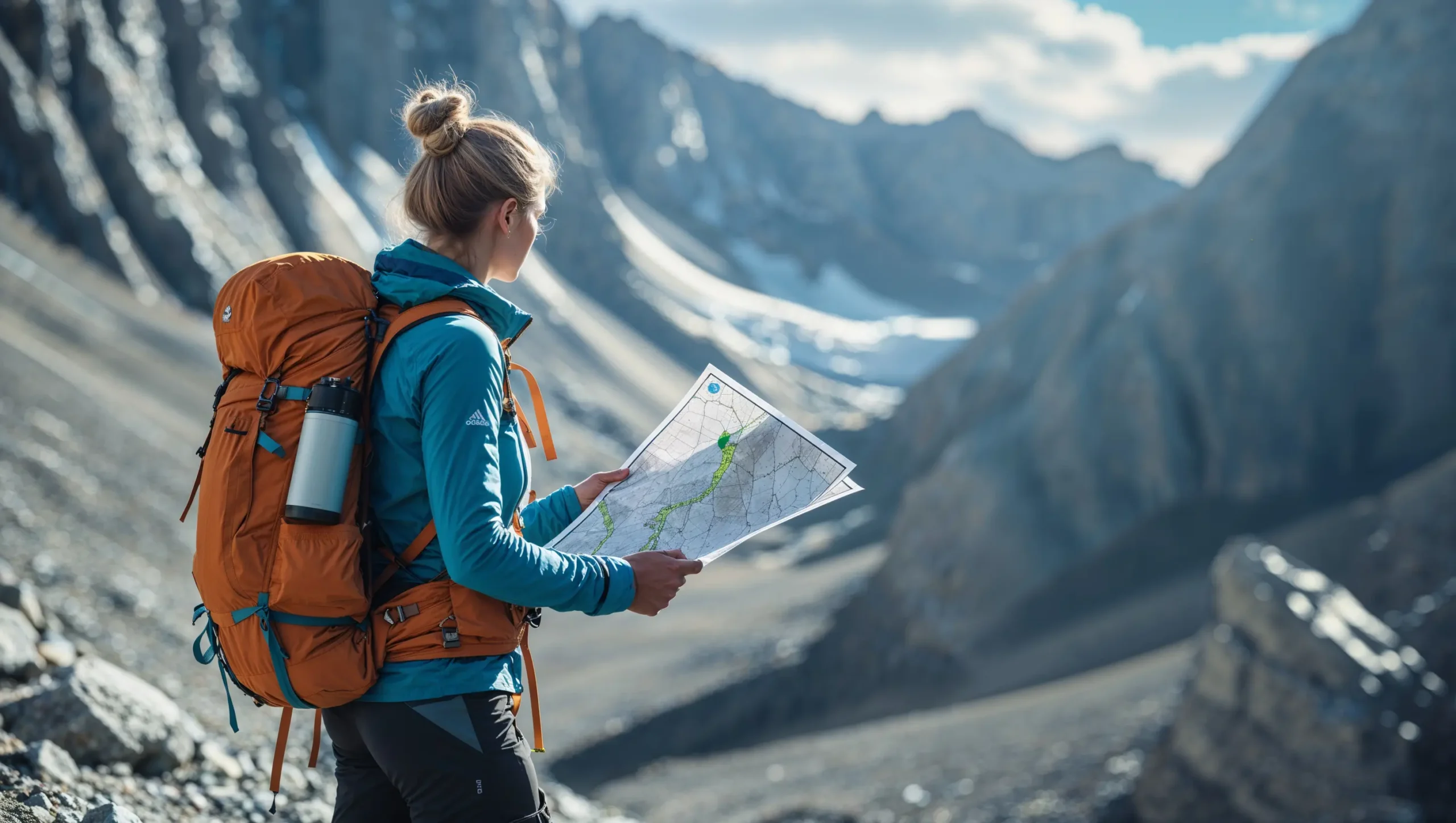
Best Time to Visit Sikkim: Seasonal Guide for Travellers, Trekkers & Photographers
Sikkim, nestled in the Eastern Himalayas, is a jewel for nature lovers, adventure enthusiasts, and cultural explorers. Each season here paints a different picture—lush rhododendron-covered hills, serene snowfields, or vivid post-monsoon panoramas. Deciding the best time to visit Sikkim depends on your interests: trekking, sightseeing, cultural immersion, or capturing world-class photographs.
In this in-depth guide, you’ll discover detailed seasonal tips, advice on when to avoid visiting (and why), and specific recommendations for trekkers and photographers.
Quick Glance: Best Times to Visit Sikkim
| Season | Months | Who Should Visit | Why |
|---|---|---|---|
| Spring | March-May | Nature lovers, Trekkers, Photographers | Rhododendron bloom, clear skies |
| Summer | June (early)-June (late) | Sightseers, Culture Seekers | Mild temperatures, some early rains |
| Monsoon | July-Early September | Offbeat Travelers | Lush greenery, risk of landslides |
| Autumn | Late September-November | Trekkers, Photographers | Crystal-clear mountain views, best trekking |
| Winter | December-February | Snow lovers, Solitude Seekers | Snowy landscapes, limited access |
Sikkim Season-by-Season: What to Expect
Spring (March to May): A Riot of Colour and Adventure
- Weather: 10°C to 28°C in the lower regions.
- Highlights: Rhododendrons, orchids, and countless wildflowers blanket mountainsides. This is the best time to witness Sikkim’s famous floral beauty.
- Best for: Trekking (e.g., Goechala, Dzongri, Kanchenjunga trails), village visits, serene sightseeing.
- Trekking: Most classic trekking routes are open and vibrant in spring. Temperatures are pleasant, skies are generally clear, and the scenery is at its freshest.
- Photography: Mid to late March till early May provides dramatic floral backdrops and crisp mountain light, ideal for nature and landscape photography.
- Festivals: Local festivals and rural experiences abound.
- Tip: Book accommodation early—spring is high season for many routes.
What to Pack: Layered clothing, windcheaters for high altitudes, sunscreen, sturdy hiking boots.
Summer (June): The Gateway to Monsoon
- Weather: 15°C to 25°C, humid by month’s end.
- Transition: June marks the start of the monsoon, with early June generally dry and inviting.
- Best for: Low-altitude sightseeing, quick escapes from India’s scorching plains.
- Trekking: Early June treks are feasible, but late June can bring disruptive rain.
- Experience: Enjoy Sikkim’s lush landscapes before the rains arrive.
- Caveats: Later in the month, humidity rises and the chances of rain increase.
Monsoon (July to Early September): When to Avoid, Unless…
- Weather: Heavy rainfall, possible landslides, and blocked roads.
- Cautions: This season is generally not recommended for first-time visitors, trekkers, or those on short itineraries. Landslides can cause road closures, delays, and safety risks.
- What You Get: Verdant landscapes, mystical mists, roaring waterfalls, and vivid greenery.
- Best for: Intrepid travelers seeking solitude, offbeat cultural experiences, or monsoon lovers.
- Travel Tips: Stick to major towns, keep itineraries flexible, and avoid high passes or remote trails2.
- Photography: While the lushness is mesmerizing, low visibility and frequent rains can challenge photographers.
What to Pack: Waterproof clothing, rain covers for cameras, flexibility in travel plans.
Autumn (Late September to November): The Prime Window for Treks and Photos
- Weather: 5°C to 20°C; cool, crisp, clear.
- Highlights: Post-monsoon freshness brings pristine mountain views—arguably the best time to visit Sikkim for trekkers and photographers.
- Trekking: Major routes are at their safest, with clear skies offering jaw-dropping Himalayan vistas.
- Photography: Crystal-clear views of Kanchenjunga and other Himalayan giants, as well as stunning sunrises, star-lit skies, and golden foliage.
- Festivals: Notable Sikkimese festivals and local fairs.
- Sightseeing: Ideal weather and visibility propel autumn to the very top for general tourism.
Tip: If you’re an avid photographer, October-November guarantees the sharpest mountain panoramas and dramatic skies.
Winter (December to February): For Snow, Silence, and Unique Perspectives
- Weather: Can plummet below 0°C, especially in North Sikkim. Most regions are chilly but offer spectacular snowscapes.
- What to Expect: Fewer tourists, an almost meditative calm, and snow-laden valleys like Lachung and Yumthang.
- Who Should Visit: Snow lovers, creatives seeking solitude, and those keen on unique winter photographs.
- Trekking: Many high-altitude trails close due to snow, but lower altitude and shorter hikes (Versay, Tosar Lake, portions of the Silk Route) are possible (check local guidance)4.
- Warning: Some popular sites and routes—especially in North Sikkim—might be inaccessible due to snow or iced roads.
- Photography: Ethereal snowscapes are ideal for dramatic winter shots.
Trekking in Sikkim: Seasonal Tips
Best Months:
- Spring (March-May): See the rhododendrons and wildflowers in bloom. Routes like Goechala and Dzongri are at their most beautiful.
- Autumn (Late September-November): The sharpest mountain views; best for summit panoramas and clear weather.
- Winter (December-February): Lower altitude treks such as Versay and Silk Route are open. Prepare for cold.
When to Avoid Trekking:
- The Monsoon (July to early September): Heavy rain and landslides make trekking routes risky and sometimes impassable.
Permits & Preparation:
- Trekkers must obtain permits (ILP or RAP for foreign nationals) and should be equipped for rapid weather changes and high altitudes. We have comprehensive article regarding Sikkim permits read here.
Photographers: Best Time for Photography in Sikkim
- Spring (March-May): For riotous floral displays and village life, particularly rhododendron valleys.
- Autumn (October-November): For panoramic views, sunrise and sunset mountain shots, dramatic landscapes, and stargazing. This is typically considered the very best time for photographers seeking clear visibility and the awe-inspiring Kanchenjunga range.
- Winter (December-February): For unique, lesser-seen winter imagery—frozen lakes, snow-clad trees, and tranquil scenes.
Tips for Great Shots:
- Carry weather protection for gear, especially in monsoon and winter.
- Early mornings offer the cleanest light and the best chance for mist-free mountain shots.
- Wide-angle lenses are ideal for dramatic Himalaya vistas.
Sikkim’s Main Festivals: Cultural Seasons
- Spring: Losar (Tibetan New Year), Shyadar Pidar.
- Autumn: Dussehra, Diwali/Tihar, Pang Lhabsol (unique mountain festival).
- Winter: Red Panda Winter Festival, Cherry Tea Festival.
Traveling to Sikkim during a festival allows for unique photographic and cultural encounters.
When to Avoid Sikkim—and Why
Monsoon (July-Early September)
- Frequent, intense rains cause road blockages and landslides.
- Trekking and sightseeing routes may close unexpectedly.
- Travel can be frustrating, with itinerary changes and potential safety concerns.
Deep Winter (Late December-February)
- High-altitude locations like Tsomgo Lake, Nathula Pass, and much of North Sikkim can become inaccessible due to heavy snowfall and road closures.
- Limited local transportation may impact your plans.
For general leisure, flower-spotting, and mountain landscapes, avoid the summer monsoon and deep winter unless specifically seeking solitude or winter sports.
Sikkim Region-by-Region: Special Seasonal Notes
- Gangtok & East Sikkim: Visitable year-round; vibrant in spring and autumn.
- North Sikkim (Lachung, Yumthang, Zero Point): Best in spring (for meadows) and late autumn (for snow, but before deep winter closures).
- Silk Route (Zuluk, Nathang): Spring for flowers, autumn for mountain views, but winters bring heavy snow and closed passes.
- West Sikkim (Pelling, Goechala, Kanchenjunga): Ideal for trekkers in spring and autumn7.
Essential Packing Tips by Season
- Spring/Autumn: Layered clothes, waterproof jackets, good hiking shoes, sun and wind protection.
- Monsoon: Full rain gear (jackets, boots), mud-resistant footwear, protection for electronics.
- Winter: Heavy jackets, thermal layers, gloves, hats, and shoes with excellent grip. Bring woolens even for indoors.
Final Tips: Making the Most of Your Sikkim Journey
- Travel Insurance: Always advisable for monsoon and winter due to fluctuating weather conditions.
- Advance Bookings: Necessary for spring and autumn, as demand is high.
- Permits: Approximate at least one day for permits and acclimatization in Gangtok or other entry towns.
- Check Local Updates: Road and weather conditions can change rapidly, so check advisories, especially in monsoon and winter.
Conclusion: When Is the Best Time to Visit Sikkim?
If you’re here for:
- Blooms & Treks: March-May (spring) offers flowers and lush mountains.
- Clear Himalayan Vistas & Crisp Weather: October-November (autumn) is unbeatable for photography, trekking, and panoramic mountain views.
- Snow & Solitude: December-February brings winter magic, though with some route restrictions.
- Avoid: Peak monsoon (July-early September) for safety and comfort.
With its multiple microclimates, Sikkim is truly a destination for all seasons—but timing your trip to your interests guarantees a more rewarding adventure.

